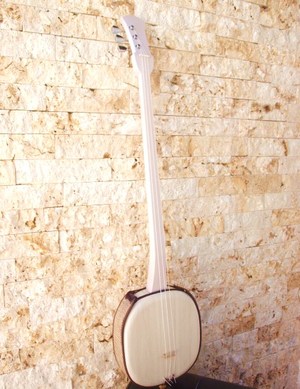Hello everyone,
First of all let me say that I am new here, and quite excited to have found a community where information relating to the shamisen is plentiful and available. But I have an issue that’s keeping me from enjoying this beautiful instrument.
I purchased my shamisen last September off of eBay. It arrived in wonderful condition and came with both a case and wooden bachi. The shamisen was rather unprofessionally strung with steel strings coated in some kind of thin fabric. Unfortunately, a friend of mine foolishly broke the highest, thinnest string while trying to tune it himself. Not long after that, the “coating” of the lowest, thickest string began to tear off and was rendered uselss. Only after the fact did I discover that steel guitar strings are dangerous to use on a shamisen, and decided to altogether buy new, silk ones.
The issue I’m faced with is what KIND of shamisen string pack/set to buy. Wherever I can find shamisen strings online (the market is unsurprisingly limited for Westerners like myself) I have to choose between strings for different kinds of shamisen. I have absolutely no idea what kind of shamisen I have, and I am unable to check the actual purchase of it on eBay. I would like to ask those with much more knowledge than I to try and identify it, so I can finally purchase strings. I understand that some strings may be used on different kinds of shamisens; I am looking for the most appropriate kind to fit my instrument.
Some rough measurements are below. I referred to this diagram, which looks somewhat like my instrument : http://www.bing.com/images/search?q=shamisen&FORM=HDRSC2#view=detail&id=B7B0C451B6E86555752FE29B72C8376AD0CA1E8F&selectedIndex=1
Approx. length of neck from lip (separating neck and the tenjin), and the dip in the neck just before the bachi-gawa: Roughly 23 inches
Approx. length of the “tuning peg” closest to the neck: 4.75 inches
Upon closer inspection my shamisen is almost identical to the one in the diagram, save for the neo (thick rope) at the bottom, which exposes more of the wooden peg protruding from the bottom of the shamisen than the neo in the diagram.
I would appreciate any kind of help identifying the “variety” of my shamisen. I realize I may have asked some stupid questions here, I’m just trying to provide a much information as possible. If needed, I can read and respond to replies in Japanese.
Thank you very much,
-Shaun














